

[Photo courtesy Carlo Mollino arabesques, Electa Press]
There’s a good chance that your college design professors never introduced you to the work of Carlo Mollino (1905 – 1973). Of the 7 architecture degrees here in our office – not one of us ever heard of the guy until recently. Maybe our professors didn’t want to create any more illusion around the profession of architecture than already exists (with Mollino’s playboy, jet-set lifestyle and all). Maybe it’s that architecture was only one of many hobbies for Mollino; who’s interests included car racing, flying airplanes and skiing. Or maybe it was that, later in life, he developed an affinity for photographing street hookers in his hometown of Turin. Tough to say, but here’s your primer on Mollino. For any of you that did happen to study him – we’d love to know how the guy was portrayed in academics.
Mollino has a strong portfolio of furniture design. The “Trestle Structure Table” (1949) below seems to have a heavy influence from his father, an Italian engineer. The design fits nicely into the northwest contemporary design philosophy that we’re still working to refine, 60 years later.

[Photo courtesy Carlo Mollino arabesques, Electa Press]
Although not as technical, the “Table for Colonna House” (1954) also exhibits an elegant and refined form.
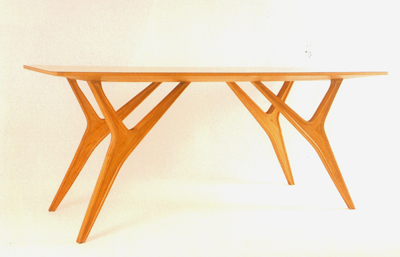
[Photo courtesy Carlo Mollino arabesques, Electa Press]
The gorgeous “2690 Cavour” desk is still in production by Zanotta and can be purchased here.

It was Mollino’s ski lodge architecture that first caught our eye. There is such a strong design intention with his alpine projects; the contrast it creates with most of the ski lodge architecture here in the northwest is embarassing. Mollino’s designs better represent the nature and luxury of skiing. The structures themselves reflect the elegance and craft of gliding down the slopes on a set of attenuated wood skis. The unbuilt Furggen station, below, creates patterns and rhythms from the required structural elements. The project also incorporates cable-car transportation to the structure – when’s the last time you worked a cable car into a project?
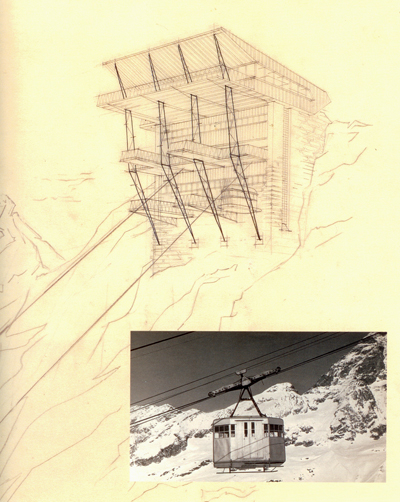
[Photo courtesy Carlo Mollino arabesques, Electa Press]
The Lago Nero Sledge-Lift Station (1947) in Salice d’Ulzio explores spatial form, structural expression and separation of materials. The finished geometry is indicative of current modern design – only Mollino was experimenting with these forms 60 years ago… and getting them built.


[Photos courtesy Carlo Mollino arabesques, Electa Press]
Apartment building in Aosta (1953). So clean and modern it would still push the envelope of design in most American cities.

[Photo courtesy Carlo Mollino arabesques, Electa Press]
Chamber of Commerce of Turin (1972). One of the few buildings from the 70’s that doesn’t make us cringe.
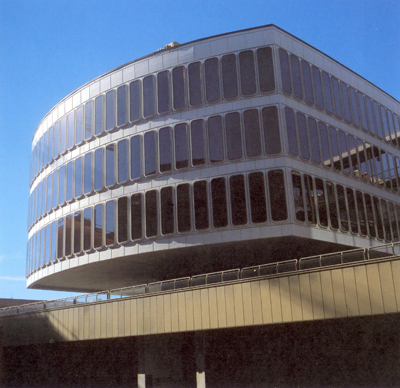
[Photo courtesy Carlo Mollino arabesques, Electa Press]
Teatro Regio in Turin (1973). Did we mention that he had an erotic side to him?

[Photo courtesy Carlo Mollino arabesques, Electa Press]
Casa del Sole Building in Cervinia (1955)
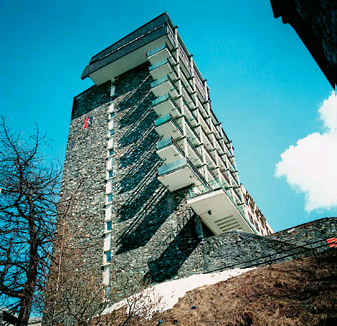
[Photo courtesy Museo Carlo Mollino]
Mollino next to one of his aerobatic biplanes which crashed in 1958.

[Photo courtesy Carlo Mollino arabesques, Electa Press]
Mollino’s design for a aerobatic airplane (1962)
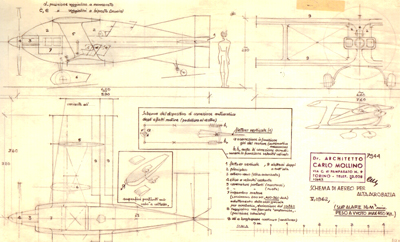
[Photo courtesy Carlo Mollino arabesques, Electa Press]
Mollino in his Bisiluro race-car design (1955) which utilized an asymmetrical geometry made of two separate hulls: one for the driver and the other for the engine.
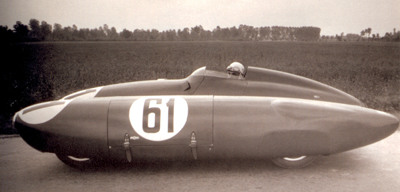

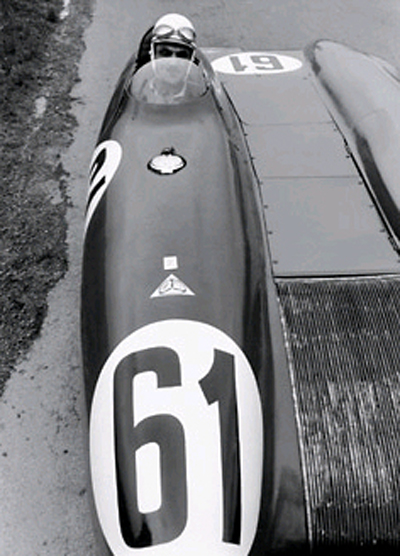
[Photos courtesy Carlo Mollino arabesques, Electa Press]
In addition to being an accomplished downhill skier, Mollino helped document the art of skiing through photographs and text books on technique.


[Photos courtesy Carlo Mollino arabesques, Electa Press]
So let’s see, we’ve got architecture, interiors, furniture, race cars, airplanes, skiing, did we leave anything out? Oh, right, the photo collections of scantily clad Italian prostitutes. You didn’t think we were going to leave that out did you? Afterall – we’re not your college architecture professors. Between 1956 and 1962 Mollino used traditional photography methods, from 1962 until his death in 1973 Mollino adopted Polaroid technology for the series. If you’re doing your math like we are, you’re putting together that this was a 17 year project for Mollino. Alrighty-then.



[Photos courtesy Carlo Mollino arabesques, Electa Press]
So there you go, the cliff notes on Carlo Mollino. Overachieving-genius, James-Bond-like stud, jet-setting-renaissance ladies-man or eccentric, fruity-ass, crazy guy with too much energy. Whadaya think?
If you are taken by Mollino’s life and work we highly recommend getting one of his books in your hands. The selections above are only a fraction of the thorough documentation available on each project and aspect of his life. “Carlo Mollino arabesques” by Electa press is our personal fav, and it can be purchase here or here.





